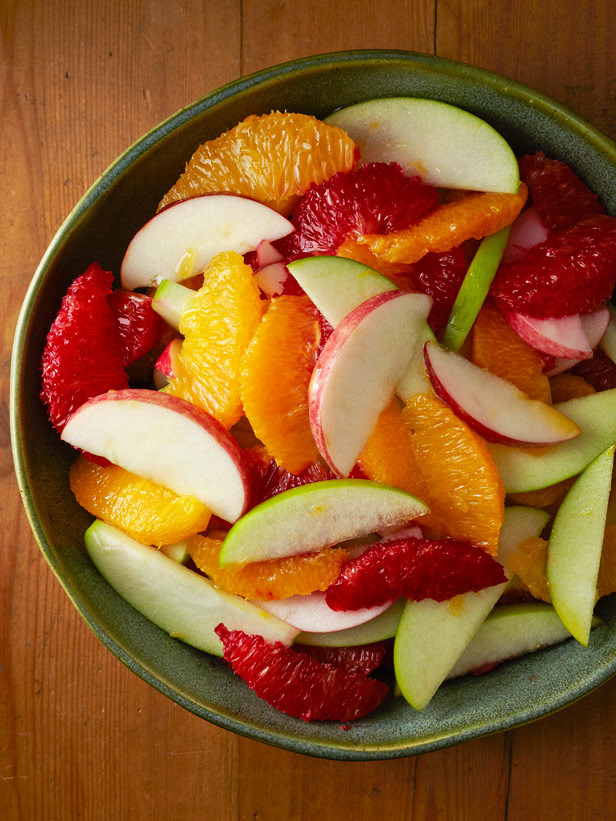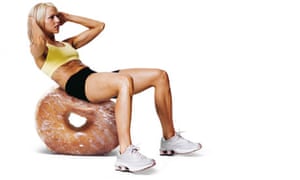Why exercise won't make you thin
by Emma John
Got a few pounds to lose? Cancel the gym membership. An increasing body of research reveals that exercise does next to nothing for you when it comes to losing weight. A result for couch potatoes, yes, but also one that could have serious implications for the government's long-term health strategy
Exercise has been shown to be ineffective when it comes to losing weight – dieting is a better route
My mum used to complain that she couldn't lose weight. A size 18 and a couple of stone heavier than ideal, she tried in vain for years to shed the extra. Every week she headed to the gym, where she pounded the treadmill like a paratrooper, often three times a week. Most days she took the dog for a brisk, hour-long walk. She didn't eat unhealthily – the rest of the family ate exactly the same meals, and did a fraction of the exercise she did. She ought to have been the slimmest of the bunch: that she remained overweight was a frustration to her, and a mystery to all of us.
From StairMasters to kettlebells, Rosemary Conley to Natalie Cassidy, we understand and expect that getting in shape is going to require serious effort on our part – and the reverse is true, too, that we expect exercise to pay back the hours of boring, sweaty graft with a leaner, lighter body. Since the days of the Green Goddess, we've known that the healthiest way to lose weight is through exercise. It's science, isn't it?
Well, science has some bad news for you. More and more research in both the UK and the US is emerging to show that exercise has a negligible impact on weight loss. That tri-weekly commitment to aerobics class? Almost worthless, as far as fitting into your bikini is concerned. The Mayo Clinic, a not-for-profit medical research establishment in the US, reports that, in general, studies "have demonstrated no or modest weight loss with exercise alone" and that "an exercise regimen… is unlikely to result in short-term weight loss beyond what is achieved with dietary change."
It sounds faintly heretical, if not downright facetious. And it's a scientific discovery that most health professionals are, naturally, keen to downplay. After all, exercise is still good for us. It's just that, in defiance of decades of New Year resolutions, it's unlikely to make us slim.
Most of us have a grasp of the rudiments of weight gain and loss: you put energy (calories) into your body through food, you expend them through movement, and any that don't get burned off are stored in your body as fat. Unfortunately, the maths isn't in our favour. "In theory, of course, it's possible that you can burn more calories than you eat," says Dr Susan Jebb, head of nutrition and health research at the Medical Research Council, and one of the government's go-to academics for advice on nutrition. "But you have to do an awful lot more exercise than most people realise. To burn off an extra 500 calories is typically an extra two hours of cycling. And that's about two doughnuts."
From a practical perspective, then, exercise is never going to be an effective way of slimming, unless you have the training schedule – and the willpower – of an Olympic athlete. "It's simple maths," says Professor Paul Gately, of the Carnegie Weight Management institution in Leeds. "If you want to lose a pound of body fat, then that requires you to run from Leeds to Nottingham, but if you want to do it through diet, you just have to skip a meal for seven days." Both Jebb and Gately are keen to stress that there is plenty of evidence that exercise can add value to a diet: "It certainly does maximise the amount you lose as fat rather than tissue," Jebb points out. But Gately sums it up: "Most people, offered the choice, are going to go for the diet, because it's easier to achieve."
There's another, more insidious, problem with pinning all your hopes for a holiday bod on exercise. In what has become a defining experiment at the University of Louisiana, led by Dr Timothy Church, hundreds of overweight women were put on exercise regimes for a six-month period. Some worked out for 72 minutes each week, some for 136 minutes, and some for 194. A fourth group kept to their normal daily routine with no additional exercise.
Against all the laws of natural justice, at the end of the study, there was no significant difference in weight loss between those who had exercised – some of them for several days a week – and those who hadn't. (Church doesn't record whether he told the women who he'd had training for three and half hours a week, or whether he was wearing protective clothing when he did.) Some of the women even gained weight.
Church identified the problem and called it "compensation": those who exercised cancelled out the calories they had burned by eating more, generally as a form of self-reward. The post-workout pastry to celebrate a job well done – or even a few pieces of fruit to satisfy their stimulated appetites – undid their good work. In some cases, they were less physically active in their daily life as well.
His findings are backed up by a paper on childhood obesity published in 2008 by Boston academics Steven Gortmaker and Kendrin Sonneville. In an 18-month study investigating what they call "the energy gap" – the daily imbalance between energy intake and expenditure — the pair showed that when the children in their experiment exercised, they ended up eating more than the calories they had just burned, sometimes 10 or 20 times as many. "Although physical activity is thought of as an energy-deficit activity," they wrote, "our estimates do not support this hypothesis."
In the 1950s, the celebrated French-American nutritionist Jean Mayer was the first to introduce a link between exercise and weight reduction. Until then, the notion that physical activity might help you lose weight was actually rather unfashionable in the scientific community – in the 1930s, a leading specialist had persuasively argued that it was more effective to keep patients on bed rest.
Over the course of his career, Mayer's pioneering studies – on rats, babies and schoolgirls – demonstrated that the less active someone was, the more likely they were to be fat. Mayer himself, the son of two eminent physiologists, and a Second World War hero to boot, became one of the world's leading figures in nutrition and most influential voices in the sphere of public health. As an advisor to the White House and to the World Health Organisation, he drew correlations between exercise and fitness that triggered a revolution in thinking on the subject in the 60s and 70s. "Getting fit" became synonymous not just with healthier living, but with a leaner, meaner body, and the ground was laid for a burgeoning gym industry.
Each successive postwar generation was enjoying an increasingly sedentary lifestyle, and those lifestyles have been accompanied by an apparently inexorable increase in obesity. Three in five UK adults are now officially overweight. And type II diabetes, which used to be a disease that affected you at the end of your life, is now the fastest-rising chronic disorder in paediatric clinics.
But have we confused cause and effect? Terry Wilkin, professor of endocrinology and metabolism at the Peninsula Medical School in Plymouth, argues that we have. The title of his latest research is: "Fatness leads to inactivity, but inactivity does not lead to fatness". Wilkin is nearing the end of an 11-year study on obesity in children, which has been monitoring the health, weight and activity levels of 300 subjects since the age of five. When his team compared the more naturally active children with the less active ones, they were surprised to discover absolutely no difference in their body fat or body mass.
That's not to say that exercise is not making the children healthy in other ways, says Wilkin, just that it's having no palpable effect on their overall size and shape. "And that's a fundamental issue," he adds, "because governments, including ours, use body mass as an outcome measure." In other words, obesity figures are not going to improve through government-sponsored programmes that focus primarily on exercise while ignoring the behemoth of a food industry that is free to push high-calorie junk to kids (and, for that matter, adults).
For one thing, Wilkin believes he has discovered another form of "compensation", similar to Timothy Church's discovery that we reward ourselves with food when we exercise. Looking at the question of whether it was possible to change a child's physical activity, Wilkin's team put accelerometers on children at schools with very different PE schedules: one which offered 1.7 hours a week, and another that offered nine hours.
"The children did 64% more PE at the second school. But when they got home they did the reverse. Those who had had the activity during the day flopped and those who hadn't perked up, and if you added the in-school and out-of-school together you got the same. From which we concluded that physical activity is controlled by the brain, not by the environment – if you're given a big opportunity to exercise at one time of day you'll compensate at another."
Wilkin argues that the environmental factors we tend to obsess about in the fight against obesity – playing fields, PE time in school, extracurricular activities, parental encouragement – are actually less of a factor in determining what exercise we do than our own bodies. "An evolutionary biologist would say physical activity is the only voluntary means you have of varying or regulating your energy expenditure. In other words, what physical activity you do is not going to be left to the city council to decide. It's going to be controlled, fundamentally, from within."
His thesis has caused controversy among his peers – there have been cavils that his study sample is inconclusively small – and not all obesity experts appreciate the message. "We haven't had the sensitivity in the studies to really determine the longitudinal determinants of obesity in children yet," says Dr Ken Fox, professor of exercise and health science at Bristol University and advisor to the government's obesity strategy. "It's far too early to start discounting things as important as physical activity. Those who are saying it has no impact are neglecting a huge amount of the literature. I am suspicious of anyone who polarises obesity as one thing over another when there is strong agreement that it has multiple causes."
"Terry's point is right," says Paul Gately, "but it's not right in the context of public health promotion. In people who have lost weight and kept weight off, physical activity is almost always involved. And those people who just do diet are more likely to fail, as are those who just do exercise. You need a combination of the two, because we're talking about human beings, not machines. We know that dietary behaviour is quite a negative behaviour – we're having to deny ourselves something. There aren't any diets out there that people enjoy. But people do enjoy being physically active."
"What we want to avoid is people thinking they can control their weight simply by dieting," adds Jebb, who points out that this is the very scenario that encourages anorexia in teenage girls. "Just restricting your diet is not going to be the healthiest way to live." Traditional dieting clubs like Weightwatchers and Slimming World promote exercise as a key part of a weight-loss strategy: scientific studies show that exercise is an important factor in maintaining weight loss and, Jebb adds, some studies suggest it can help in preventing weight gain.
But it is still much harder to exercise when you're already overweight, and "high energy density" foods are quick to get us there – overeating by just 100 calories a day can lead to a weight increase of 10lb over a year. "Education must come first," says Wilkin. "Eating habits have to change to a much lower calorie intake, much lower body weight, and we would be fitter as a result because we would be able to do more physical activity." He would like to see higher levels of tax on calorie-dense food, similar to those levied on tobacco, which have proved effective in the campaign against smoking.
http://www.theguardian.com/lifeandstyle/2010/sep/19/exercise-dieting-public-health


















